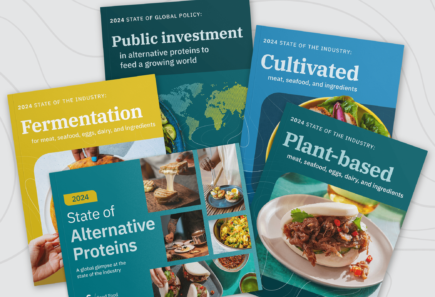
Consumer attitudes toward alternative seafood
Alternative seafood is a clear market opportunity. To date, little research has been conducted in this area. To fill this gap and strengthen the alternative seafood innovation ecosystem, we partnered with consumer insights and brand strategy firm, Kelton Global. This resource outlines the key findings.
Market and consumer gaps in alternative seafood
While seafood and shellfish made up about 16 percent of the total U.S. retail conventional meat and seafood market in 2023, plant-based seafood accounted for just 1 percent of dollar sales of the total U.S. retail plant-based meat and seafood market. Mirroring this market gap is a knowledge gap about consumer attitudes towards alternative seafood. This study surveyed 2,500 U.S. residents ages 18-65. Gender, age, and region were roughly balanced with census demographics.
Key takeaways
- Alternative seafood is well positioned to appeal to general consumers as many consumers place importance upon their personal health and the environment.
- General consumers need more information about the benefits and taste of alternative seafood in order to feel compelled to try it. The primary concerns are taste and texture of the products.
- While taste is table stakes for both plant-based and cultivated seafood, messaging about products’ environmental, health, and functional benefits can bring additional consumers into the category.
- Consumers showed equal interest in plant-based and cultivated seafood. There is value in pursuing both alternative seafood options.
Related resources

State of Alternative Protein series
Explore our comprehensive State of Alternative Proteins series for insights into the rapidly evolving alternative protein landscape.

Action paper: An ocean of opportunity
This action paper explores alternative seafood’s role in creating a sustainable, secure, and just food system.

Aggregating data for alternative seafood
Use our open-access databases to explore how scientific taxonomies and evolutionary relationships map onto culinary categories of seafood.

Consumer insights
Understand alternative protein consumer segments, demographics, adoption, motivations, and perceptions.
